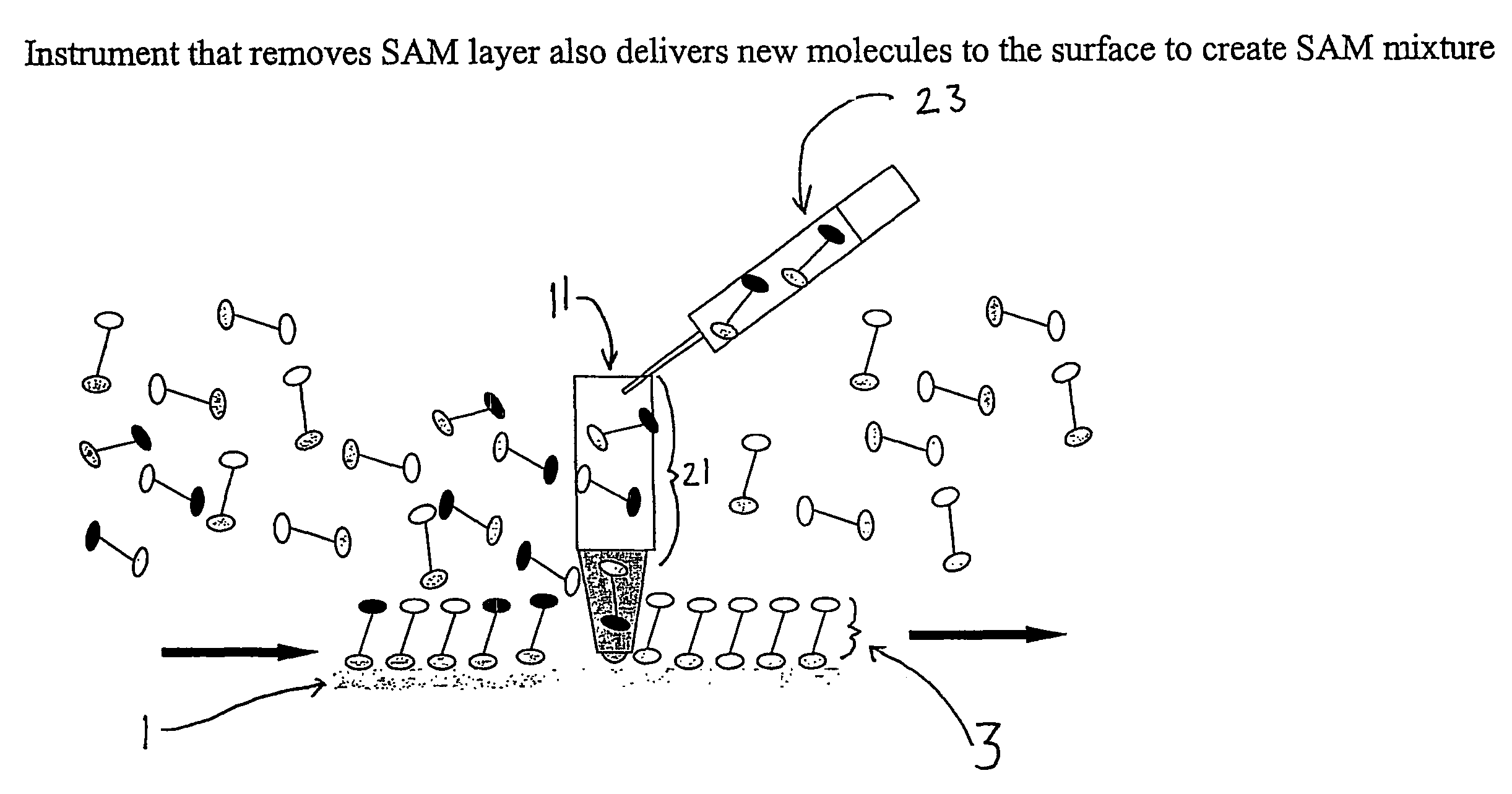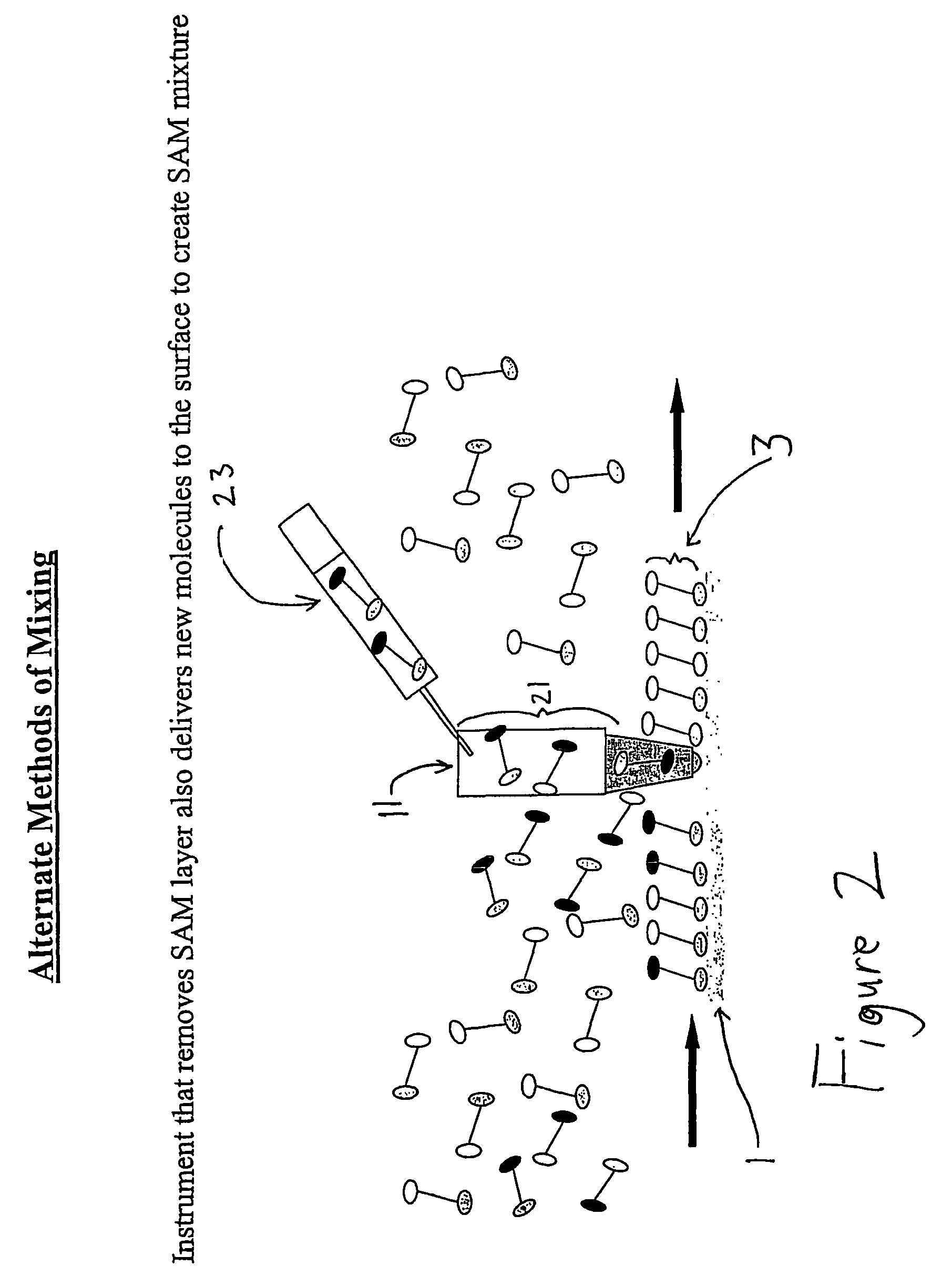Surface-energy gradient on a fluid-impervious surface and method of its creation using a mixed monolayer film
a technology of surface energy gradient and fluid-impervious surface, which is applied in magnetic recording, material analysis, record information storage, etc., can solve the problems of increasing not solving the problem of fluid friction loss, and reducing the energy required to operate such systems. , to achieve the effect of reducing external forces, reducing energy consumption, and reducing energy consumption
- Summary
- Abstract
- Description
- Claims
- Application Information
AI Technical Summary
Benefits of technology
Problems solved by technology
Method used
Image
Examples
Embodiment Construction
[0089]While this invention may be embodied in many different forms, there are described in detailed herein specific preferred embodiments of the invention. This description is an exemplification of the principles of the invention and is not intended to limit the invention to the particular embodiments illustrated.
[0090]As used herein, the term “tube” is any hollow object open on two sides without limitation by cross-sectional geometries.
[0091]Turning now to the drawings, FIG. 1 shows a blown-up schematic view of an embodiment of the method for producing a mixed monolayer surface energy gradient. The view consists of 6 slides. Slide (a) shows a base surface 1 having a monolayer 3. The original monolayer is made up of a plurality of first organic molecules 5. The base surface 1 having a monolayer 3 can be stored and used later as well. The first organic molecules 5 are comprised of a functional group 7 (e.g. thiol) that reacts with the base surface 1 and a low surface energy functiona...
PUM
| Property | Measurement | Unit |
|---|---|---|
| width | aaaaa | aaaaa |
| contact angle | aaaaa | aaaaa |
| aspect ratios | aaaaa | aaaaa |
Abstract
Description
Claims
Application Information
 Login to View More
Login to View More - R&D
- Intellectual Property
- Life Sciences
- Materials
- Tech Scout
- Unparalleled Data Quality
- Higher Quality Content
- 60% Fewer Hallucinations
Browse by: Latest US Patents, China's latest patents, Technical Efficacy Thesaurus, Application Domain, Technology Topic, Popular Technical Reports.
© 2025 PatSnap. All rights reserved.Legal|Privacy policy|Modern Slavery Act Transparency Statement|Sitemap|About US| Contact US: help@patsnap.com



